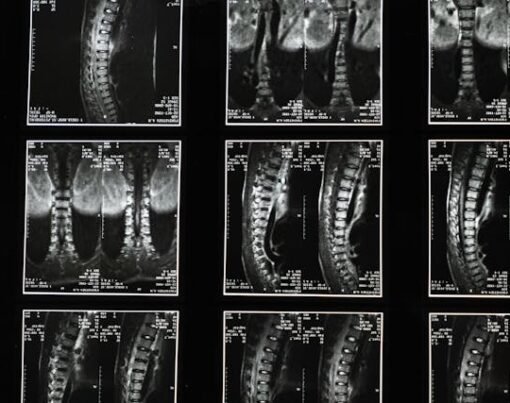Transporting elderly patients safely and comfortably is a vital aspect of assuring high-quality healthcare and maintaining their well-being. Whether it’s moving them between different medical facilities, assisting with their daily activities, or accompanying them on leisure trips, assuring their safety and comfort during transportation is of utmost importance.
Table of Contents
Strategies to achieve a safe and comfortable transportation experience for elderly patients.
- Preparation and Assessment: Before embarking on any transportation endeavor, it is essential to conduct a thorough assessment of the elderly patient’s needs and condition. Understanding their medical history, physical limitations, and any potential risks allows caregivers and transportation providers to plan accordingly and make necessary accommodations.
- Mobility Aids: For elderly patients with mobility challenges, utilizing appropriate mobility aids is crucial. Wheelchairs, walkers, canes, or transfer boards can facilitate safe movement and prevent accidents during transportation. Ensure that these aids are in good condition, well-maintained, and suitable for the patient’s specific requirements.
- Proper Lifting Techniques: When lifting an elderly patient, caregivers and transportation personnel, must employ proper lifting techniques to avoid injuries to both the patient and themselves. When transferring the patient from a bed to a wheelchair or vice versa, a two-person lift is often recommended to distribute the weight evenly and reduce the strain on one individual.
- Securing Sear Belts and Restraints: In vehicles, always ensure that seat belts and restraints are properly fastened to secure the elderly patient during transportation. Additionally, specialized seat belts designed for seniors or those with medical conditions may provide added safety and comfort.
Comfort During Transportation
- Comfortable Seating: Provide the elderly patient with a comfortable seating arrangement that supports their back and assures adequate cushioning. Assure that the seat is well-padded and properly positioned to minimize any discomfort or strain during travel.
- Temperature Control: Maintain an appropriate temperature within the vehicle to assure the patient remains comfortable throughout the journey. Adequate heating or air conditioning should be available, depending on the weather conditions, to forestall overheating or chilling.
- Smooth Driving: The driver should practice gentle acceleration, braking, and turning to avoid sudden jolts or movements that may cause discomfort or distress to the elderly patient. Smooth driving enhances the overall transportation experience and minimizes the risk of injuries due to sudden stops or starts.
Special Considerations
- Medication Management: If the patient requires medication during transportation, assure it is readily accessible and administered at the appropriate times. Medication reminders and adherence to prescribed schedules are vital to maintaining their health and well-being.
- Frequent Breaks: For long journeys, schedule regular breaks to allow the elderly patient to stretch use the restroom, and hydrate. Frequent breaks aid prevent stiffness, promote circulation and reduce the risk of developing blood clots.
How to find reliable medical transport for the elderly?
When seeking reliable medical transportation for elderly loved ones, it’s elemental to prioritize safety, comfort, and professionalism. Here are some steps to aid you find a trustworthy and dependable medical transport provider:
- Research and Recommendations: Begin by conducting thorough research on local medical transport companies. Ask for recommendations from family members, friends, or healthcare professionals who have experience with medical transportation services. Online reviews and testimonials can also assure valuable insights into the reputation and reliability of different providers.
- Licensing and Accreditation: Ensure that the medical transport service is properly licensed and accredited by the relevant authorities. Valid licenses and certifications demonstrate compliance with safety standards and regulations, giving you peace of mind that your loved one will be in capable hands.
- Experience and Specialization: Look for medical transport companies with extensive experience in transporting elderly patients. Experience often translates to a better understanding of the unique needs of seniors during transportation. Some companies might specialize in specific medical conditions, such as wheelchair transportation or non-emergency medical trips, which can be beneficial if your loved one requires specialized care.
Benefits of medical transportation for the elderly
Here are some of the key advantages of medical transportation for the elderly:
- Access to Healthcare: Medical transportation enables elderly individuals to access vital healthcare services without relying on family members or friends. It ensures they can attend doctor’s appointments, therapy sessions, diagnostic tests, and other medical facilities promptly and consistently, leading to improved healthcare management and better health outcomes.
- Reduced Stress and Anxiety: For elderly individuals, navigating public transportation or driving to medical appointments can be stressful and overwhelming. Medical transportation services eliminate this burden by overwhelming. Medical transportation services eliminate the burden by assure door-to-door service, eliminating the need for seniors to navigate unfamiliar routes or deal with traffic-related stress.
- Social Interaction: Medical transportation often involves shared rides, providing an opportunity for elderly passengers to engage in social interaction with others. This social aspect can help combat feelings of isolation and loneliness, positively impacting their mental and emotional well-being.










